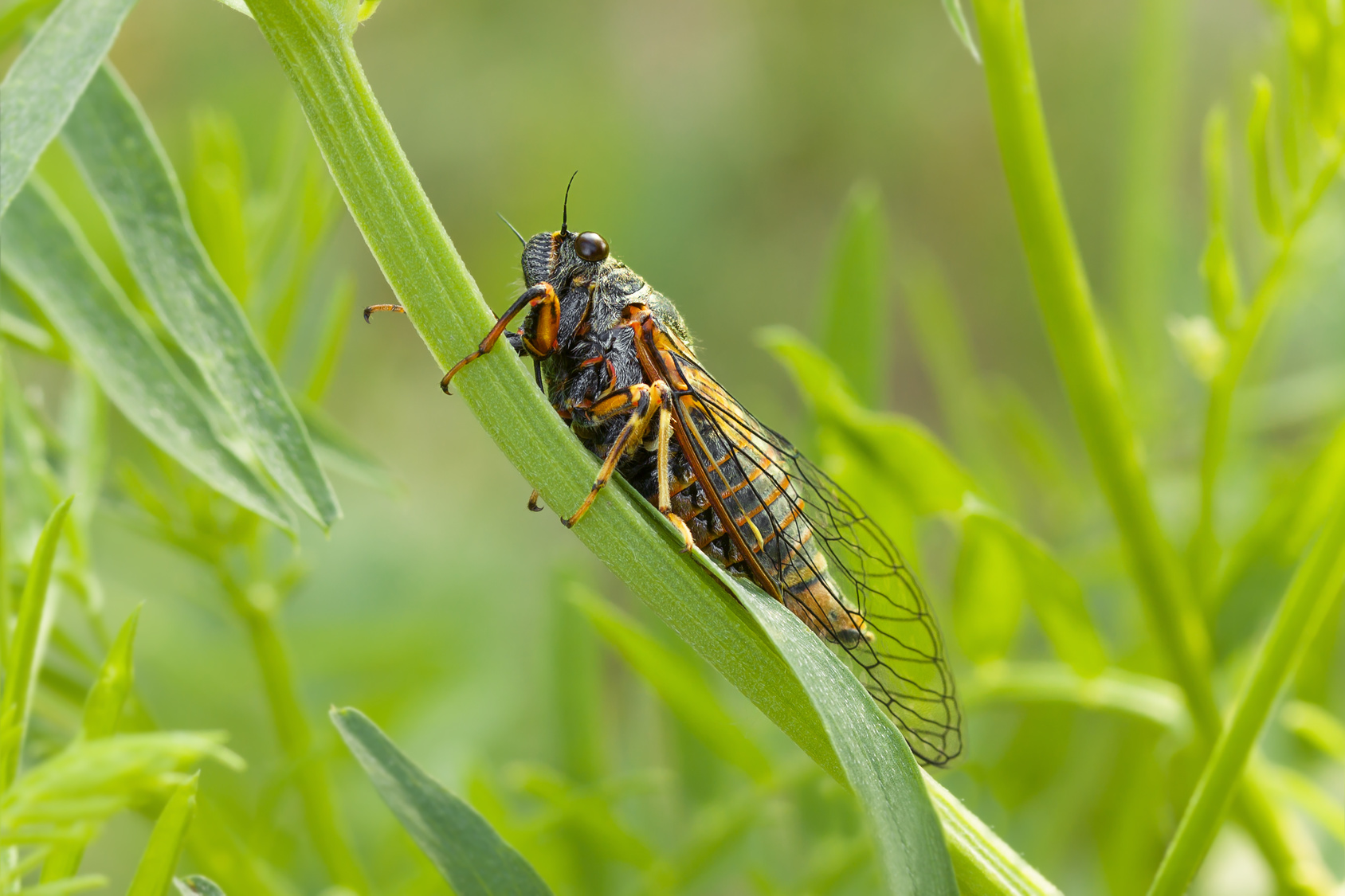Recently I returned to my home state of West Virginia to conduct a funeral for a distant relative. Following the service at the funeral home, we drove to the cemetery in a procession. After arriving, I walked to the back of the hearse where I joined the funeral director and six pall bearers I did not know. We stood awkwardly while we waited for others to exit their cars and for the family members to take their places.
While standing there, we heard it A loud, metallic buzz that came from nearby trees. Very loud. It faded slightly and then rose again. The pall bearers looked over their shoulders, trying to see the source of the noise. “The seventeen year locusts,” pronounced the funeral director, who had seen the questioning on all our faces. “They’re back. Its the seventeen year locusts.”
I had not thought of them since I was a child, living with my grandparents. Perhaps I’ve lived in the wrong regions of the country, or in a city, where they don’t’ swarm, but I hadn’t heard them or thought about them in decades. But I remember my grandmother telling me how particular strains of locusts had a long life cycle, much of which approached dormancy. Then, after seventeen years they appeared again in large swarms. Now, here they were, swarming and buzzing, One pall beard noted that they sounded apocalyptic – so great was their noise.
My grandmother warned they’d be back, but I wasn’t paying much attention when I was twelve. I had more pressing things to do in the next seventeen years than to wait on the return of locusts. From the time she told me about them until they returned the first time I would live in four states, get my driver’s license, graduate from high school, college, and seminary. I would marry and be waiting on my second child to be born. With that much living to do, who has time to think about something that takes seventeen years to happen?
Now, in my sixties, I stood behind the hearse and listened to the swarm. I made the quick calculation and realized, that since my first encounter with the locusts, I have lived through three, seventeen year cycles. How long seventeen years seemed back then; how quickly 51 years have gone by since. This is always the problem in taking the long view in life. The future looks incredibly distant from the front side and remarkably short from the back side.
If only we could learn to take a long view of life when we were younger. When I hear an older people say, “If I had known how long I was going to live, I would have taken better care of myself,” I know they wish they had taken the long view. I’ve read articles by investors who wish they had placed more trust in the power of compound interest over time instead of trying to hit the moon every year with a hot stock tip.
I believe the long view of life is the healthiest and most effective. It allows us to be intentional about life and purpose instead of responding to the “tyranny of the urgent” the things which get in our way and demand our attention.
What does it look like to take the long view in ministry? Here is one, simple idea: write down a preferred future for you and your church. It may be a detailed strategic plan, but it may simply be a guiding sentence. Look at it no less than once a month and do one concrete thing to move forward the vision God has given you.
Funerals happen. People show up at your office door unannounced. Interruptions abound. Therefore, don’t get discouraged if you don’t wok on the plan every day or every week. But every month, do at least one thing to move it forward. Do something to move the glacial pace of change and improvement one inch in the direction God indicates. Just one inch.
An inch every month may not seem like much, from where you stand today, but by the time the locusts return you’ve moved seventeen feet. When you take the long view, incremental movement adds up over time.
We can apply the power of long term, incremental change to the churches we serve, or to our personal lives – losing weight, working on a degree, or writing that book we’ve dreamed of authoring. Moving an inch here, losing a pound there, writing a page this month and next. Pretty soon you’ve made progress. Real progress.
The key is to get started today. From experience I can tell you that the locusts will be back before you know it.

Leave a Reply